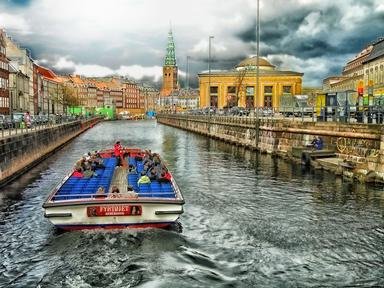Quiz Answer Key and Fun Facts
1. Although they are an autonomous (self-governing) region, under which country's jurisdiction do the Faroe Islands fall?
2. The population on the Faroe Islands is largely descended from Viking settlers who arrived starting in the 9th century.
3. There exists a controversial practice on the Faroe Islands called "grindadráp". This involves the hunting of which non-endangered animals?
4. Tórshavn is the capital of the Faroe Islands. It's named for which Norse god?
5. The island of Suðuroy is known for its stunning natural landscapes. The most notable and picturesque part of the island is called Beinisvørð. What is Beinisvørð?
6. The capital, Tórshavn, is located on the island of Streymoy. It is serviced directly by the adjacent Vágar Airport which was built by the United States to increase traffic to the islands.
7. Atlantic fishing makes up a huge part of the Faroese economy, and some of their fish is sold globally. Which is *NOT* one of the fish that is a part of the Faroese fishing industry?
8. For historical reasons, the large majority of the Faroese practice the same religion. What is the primary religion of the Faroe Islands?
9. There are some fascinating sights to see in the Faroe Islands. Which structures are often visited by sightseers, but also serve an important practical purpose due to the nature of the islands?
10. The Faroe Islands celebrate their national day from July 28 to 29. Who is the celebration named for, who happens to be the patron saint of the islands, but also the patron saint of Norway?
Source: Author
LeoDaVinci
This quiz was reviewed by FunTrivia editor
agony before going online.
Any errors found in FunTrivia content are routinely corrected through our feedback system.
